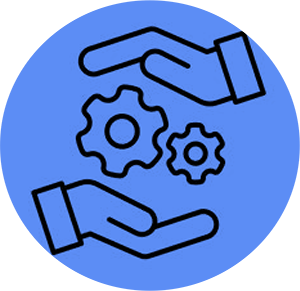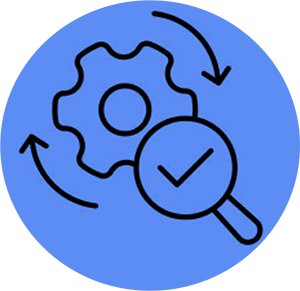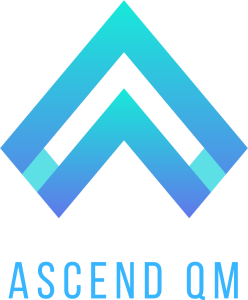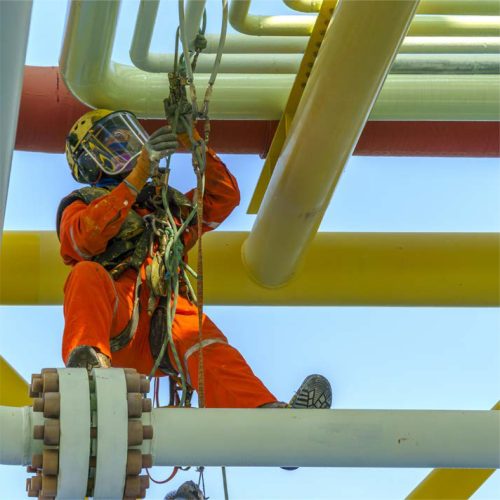Services
We provide expert guidance and solutions to ensure safety and regulatory compliance in industries that require working in elevated environments.
Ascend
Quality
Management
At Ascend QM, we believe that excellence can be achieved by all businesses, no matter what size.
Ascend offer a variety of services within the quality management systems sphere of the Industrial Rope Access and Height Safety sectors.
Take your business to the next level, with Ascend.

Consultancy
Let us help your organisation in Defining, developing and designing solutions that are specific to the needs and requirements of your business. This allows you to determine the overall direction of your enterprise and involves specifying the organization’s objectives, developing policies and plans to achieve those objectives, and then allocating resources to implement the plans.

Business QMS
Whether it be Defining, developing or designing a complete system that is specific to your organisational needs and business requirements, or refining existing and established quality management systems, ascend can assist you in the ongoing improvement of your QMS to aid in the ongoing growth, sustainability and success of your organisation.

GAp Anlysis
The comparison of actual performance against potential or desired performance criteria. Along with determining compliance, a gap analysis Allows for Assessment of areas such as economic factors, competitive market influences, human resource issues, global events and trends, non-financial drivers, to provide additional information and support to business operations.

ISO Accreditation
Ascend QM offer guidance and consultancy services to business who are looking to establish, or maintain a quality management system that is certifiable to ISO requirements.
ISO accreditation refers to the certification of an organization’s management systems to meet international standards set by the International Organization for Standardization (ISO). For ISO 9001, 14001, and 45001, each standard covers a specific aspect of management within an organization. Here’s a breakdown of these three standards:
1. ISO 9001: Quality Management Systems (QMS)
- Purpose: ISO 9001 focuses on ensuring organizations consistently meet customer expectations and regulatory requirements for product and service quality.
- Key Principles:
- Customer focus
- Leadership and employee involvement
- Process approach
- Continuous improvement (Plan-Do-Check-Act cycle)
- Certification Requirements: Companies need to demonstrate effective quality management systems, documented procedures, regular reviews, corrective actions, and a focus on customer satisfaction.
- Benefits: Increased efficiency, reduced waste, improved customer satisfaction, and a stronger competitive edge.
2. ISO 14001: Environmental Management Systems (EMS)
- Purpose: ISO 14001 is designed to help organizations minimize their environmental impact, comply with regulations, and improve environmental performance.
- Key Principles:
- Environmental risk management
- Commitment to sustainable practices
- Continuous improvement of environmental performance
- Certification Requirements: Organizations must identify and manage their environmental aspects (like energy use, waste production), comply with legal and regulatory requirements, and continually improve their environmental management.
- Benefits: Reduced environmental impact, regulatory compliance, and enhanced reputation as an environmentally responsible company.
3. ISO 45001: Occupational Health and Safety Management Systems (OHSMS)
- Purpose: ISO 45001 focuses on managing risks related to workplace safety and health, aiming to reduce work-related injuries, accidents, and illnesses.
- Key Principles:
- Risk-based approach to safety management
- Employee involvement and safety awareness
- Compliance with health and safety regulations
- Continuous improvement
- Certification Requirements: Organizations must implement policies and procedures to reduce risks, regularly assess workplace hazards, and engage in incident reporting and investigation.
- Benefits: Reduced workplace accidents, better employee safety, legal compliance, and improved morale.
Achieving Accreditation:
- Implementation: Organizations must align their processes with the respective standards, create the necessary documentation, train employees, and establish continuous monitoring systems.
- Certification Process:
- Gap Analysis: Identifying areas of non-compliance with the standard.
- Internal Audits: Conducting internal checks to ensure compliance.
- External Audit: A third-party certifying body conducts the final audit.
- Certification: If the audit is successful, the organisation receives its ISO certification.
Integrated Management Systems (IMS): Many organisations integrate these standards into one system to streamline processes and audits. To learn more about ISO, click here.
IRATA INternational
Since the early 1980’s the Industrial Rope Access Trade Association (IRATA) has been the leading international expert in rope access. Since its inception, IRATA has maintained a documented approach to training technicians, in the interest of providing the safest possible operational solutions within the work-at-height and confined space sectors.
Ultimately, IRATA’s objective was the development of a safe system of work, allowing personnel to gain access to and from the work position, and be supported there. Along with the development of such systems, came the development of a robust operating documentation that has been revised over the years and ancillary equipment, personal protective equipment and rope access methodology has evolved.
IRATA has three types of membership:
- Operator – Companies engaging in operations utilising industrial rope access
techniques (other than training); - Trainer – Companies engaging in training personnel in all techniques of industrial
rope access; - Associate – Equipment manufacturers and suppliers of other services.
IRATA’s membership requirements are strict and are founded on international best practice for working at height. IRATA provides guidance and direction to its members, who in turn, manage the delivery of training and the management of operational work within the rope access sector. This ensures that all member companies, and technicians, act according to the safety practices proscribed by IRATA, with the quality of this system safeguarded through the process of auditing IRATA members.
Click here to learn more about IRATA International.
 Ascend with Us
Ascend with Us
In order to achieve a safe system of work, companies must have a suite of company policies, procedures and forms that support their technicians.
Having a clear organisation structure, transparent documentation and available technical support is vital to ensure that personnel have a complete understanding of their roles and responsibilities as an IRATA International technicians working for an IRATA member company.
A well-structured rope access capability allows for personnel to undertake careful planning and conduct documented risk assessments for each operational project, maintaining safety for all personnel, plant and equipment, whilst being able to comply with IRATA International requirements.
Ascend are available to build a complete rope access system within your organisation, or review your existing rope access capabilities to ensure that they meet the strict IRATA International membership requirements. By attaining IRATA International embership, your organisation will be able to demonstrate to your clients your commitment to safety, through regularly audited systems and high safety standards, ultimately enhancing your organisations appeal to existing and prospective clients.
It is important to ensure that the addition of rope access capabilities is hand in hand with understanding of the IRATA membership requirements – not just the nominated technicalc authorities, but all personnel whomay be engaged in the document management ystems and internal compliance.